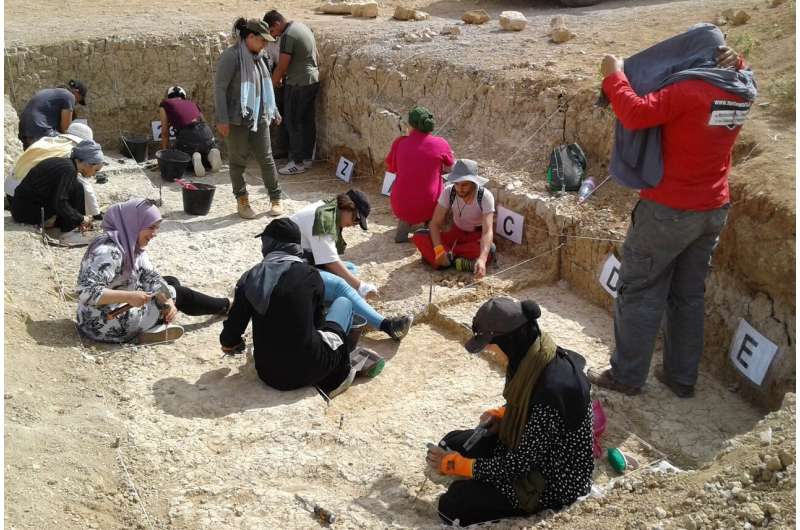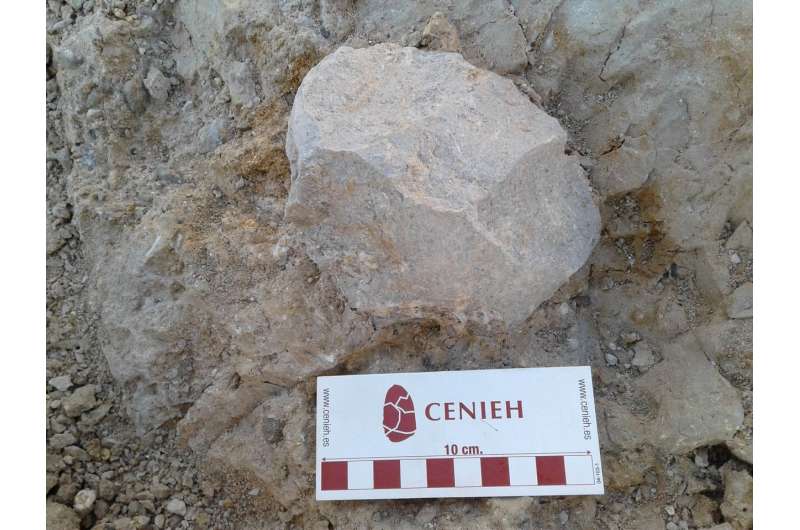Study documents the first human occupation in North Africa

Scientists from el Centro Nacional de Investigación sobre la Evolución Humana (CENIEH) (Burgos, Spain) and from the Algerian Centre de Recherches Préhistoriques, Anthropologiques et Historiques (CNRPAH) (Algiers, Algeria) have collaborated in a new round of fieldwork in July 2019 at the site of Ain Hanech in northeastern Algeria to investigate the Tempo and Mode of the earliest human occupation in North Africa.
As explained by Dr. Mohamed Sahnouni, Research Professor and Coordinator of the Archaeology Program of the CENIEH, leading the research at Ain Hanech since 1992, the 2019 fieldwork has been very successful, allowing the project scientists to collect pertinent data to further investigate early hominid evolution and behavior in North Africa between 2.4 and 1.7 Ma in connection with their surrounding ecology.
Ain Hanech currently preserves the evidence of the oldest archaeological occurrences in North Africa and consists of Plio-Pleistocene archeo-paleontological localities with hundred meters of sedimentary deposits yielding savanna-like fossil fauna associated with Oldowan (Mode I) stone tools ranging between 2.4 and 1.7 million years ago.
The 2019 fieldwork focused on expanding the excavation at the localities of Ain Boucherit Upper-Level (dated to 1.92 Ma) and El-Kherba (dated to 1.7 Ma), sampling for sedimentological and micromorphological studies at the locality of Ain Hanech (dated to 1.7 Ma), as well as searching Acheulean tools that replaced the Oldowan ones.

At Ain Boucherit, the excavation has been expanded southward, yielding Oldowan artifacts associated with animal fossil bones, some of which are intentionally modified by early hominids, including cutmarked and hammer-stone percussed bone specimens. Similarly, El-Kherba yielded further Oldowan stone tools associated with fossil bones of hippo, rhino, equids, bovids, and carnivores. The objective of sediment sampling at Ain Hanech is to study in depth the mode of accumulation of the remains and to reconstruct the paleoenvironment of the site.
"Regarding the Acheulean, we were able to discover numerous tools (Mode II) from the calcrete deposits that seal the Ain Boucherit-Ain Hanech stratigraphic sequence. In the next phase of our research, we will investigate the dating of the Ain Hanech Acheulean occurrences in order to document how early the Acheulean occupation replaced the Oldowan in North Africa," says Dr. Mohamed Sahnouni.
Provided by CENIEH




















